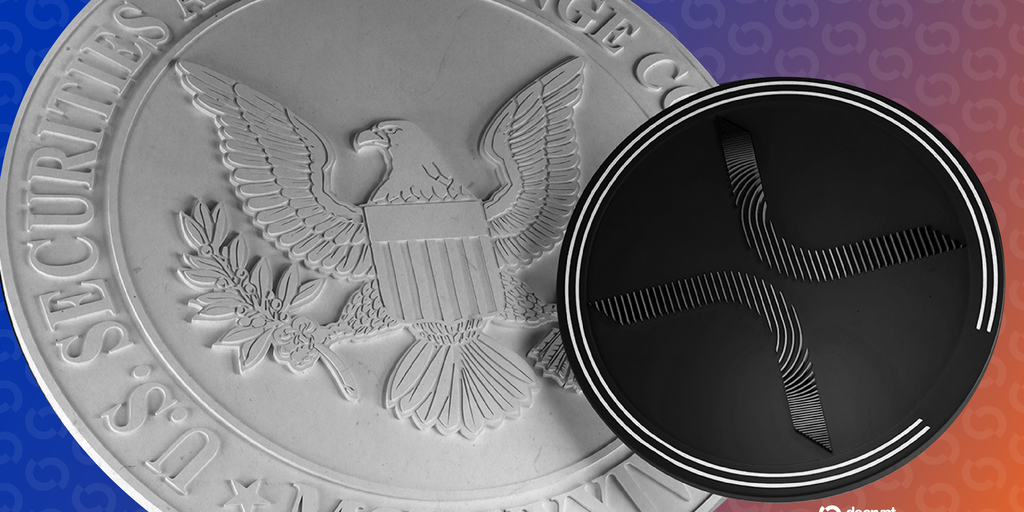
Ripple and the U.S. Securities and Exchange Commission (SEC) have been embroiled in a protracted legal battle over XRP sales since 2020. Despite efforts to reach a resolution, the case remains unresolved, highlighting the complexities of cryptocurrency regulation. The legal dispute began when the SEC charged Ripple and two of its executives with conducting a $1.3 billion unregistered securities offering through XRP sales. Although a 2023 court ruling favored Ripple, the SEC appealed, followed by a cross-appeal from Ripple.
The election of President Donald Trump and the appointment of crypto-friendly regulators have seen both parties working towards a resolution. However, legal hurdles have prevented a definitive conclusion, though the end may be near.
Ripple’s CEO Announces a Turning Point
In March, Ripple CEO Brad Garlinghouse announced that the SEC would drop its appeal against the company. This announcement was a significant moment for Ripple and the broader cryptocurrency industry. Garlinghouse’s statement on X declared,
“This is it—the moment we’ve been waiting for. The SEC will drop its appeal—a resounding victory for Ripple, for crypto, every way you look at it.”
The news led to a 14% increase in XRP’s value, underscoring the market’s sensitivity to regulatory developments.
Financial Penalties and Settlement Attempts
Initially, Ripple was ordered to pay a $125 million fine. However, in March, the SEC agreed to reduce the penalty to $50 million, with the remaining $75 million to be returned to Ripple Labs from escrow. Ripple’s Chief Legal Officer, Stuart Alderoty, confirmed this development on X, adding that Ripple would drop its cross-appeal following the SEC’s decision.
In April, both parties filed to suspend their appeals, marking the first official indication of the SEC’s intention to drop its appeal. However, this agreement required approval from SEC commissioners.
Internal Disagreements and Judicial Rejections
In May, SEC Commissioner Caroline Crenshaw criticized the settlement, arguing that it undermined the court’s authority and the SEC’s enforcement actions. Crenshaw stated,
“This settlement, alongside the programmatic disassembly of the SEC’s crypto enforcement program, does a tremendous disservice to the investing public and undermines the court’s role in interpreting our securities laws.”
Her comments highlighted internal disagreements within the SEC regarding the case’s resolution.
Shortly after, a federal judge rejected the proposed settlement due to procedural errors. The judge’s decision was based on the parties bypassing a rule governing relief from final judgments. Alderoty responded by emphasizing that the ruling did not alter Ripple’s legal victories, particularly regarding XRP’s status as a non-security.
Continued Legal Maneuvering
In June, Ripple and the SEC sought to dissolve the injunction and release the $125 million in escrowed funds. However, Judge Analisa Torres denied their request, citing the SEC’s compelling case built over four years. The judge’s decision maintained the original $125 million penalty and the injunction.
Following this setback, Ripple announced its decision to drop its cross-appeal, with the SEC expected to do the same. Garlinghouse expressed optimism that this move would finally conclude the legal saga, allowing Ripple to focus on its core mission of building the “internet of value.”
Implications for the Crypto Industry
The Ripple vs SEC case underscores the ongoing regulatory challenges facing the cryptocurrency industry. The outcome of this legal battle could set a precedent for how digital assets are classified and regulated in the United States. As Ripple and the SEC work towards a resolution, the case remains a focal point for industry stakeholders, investors, and regulators.
As the legal proceedings draw to a close, the crypto community awaits the final filings that will solidify the case’s conclusion. The resolution of this high-profile dispute will likely influence future regulatory approaches to cryptocurrencies and shape the industry’s evolution.







